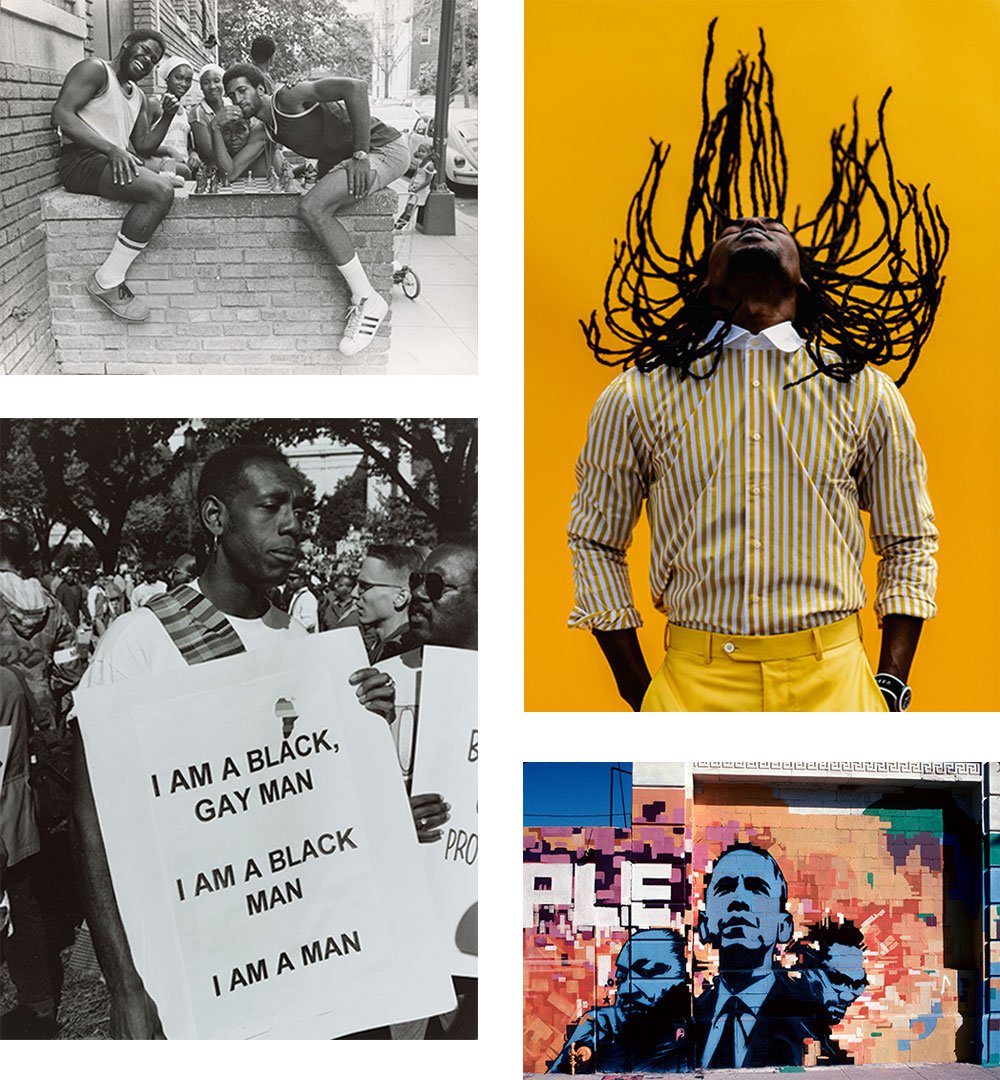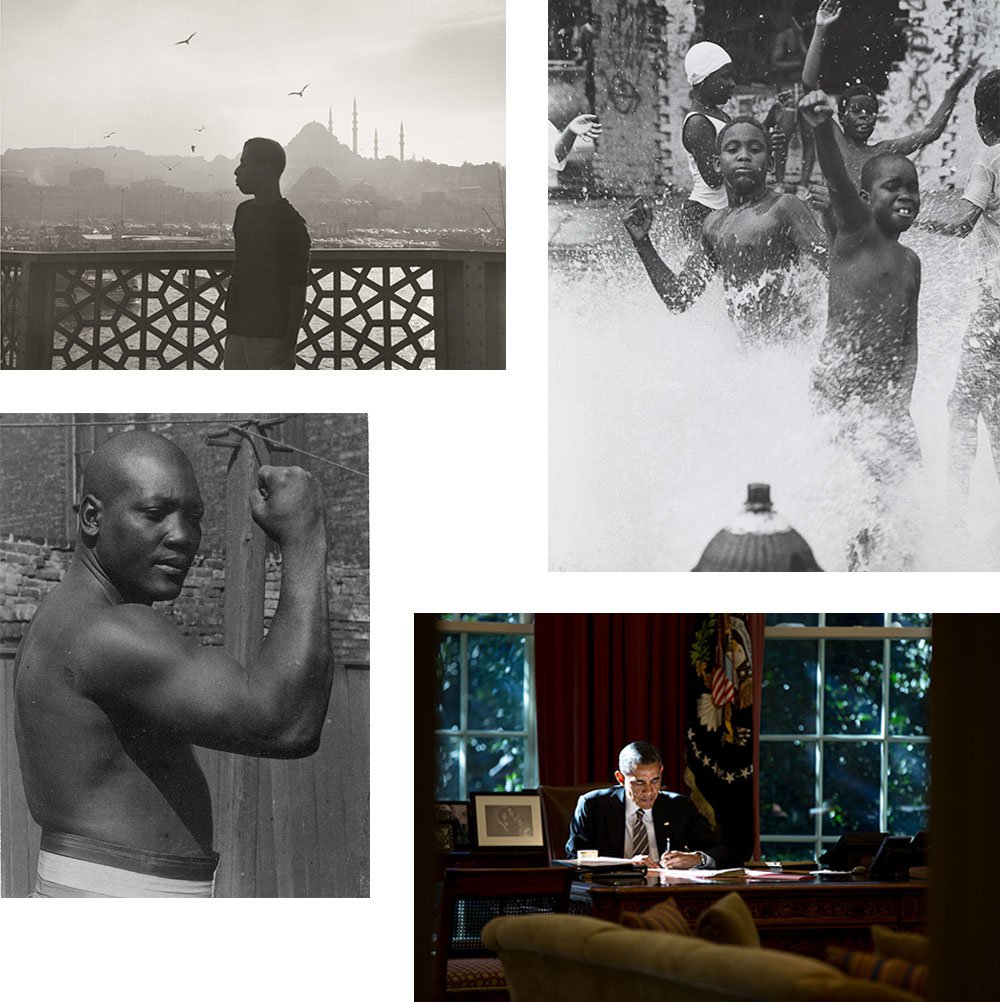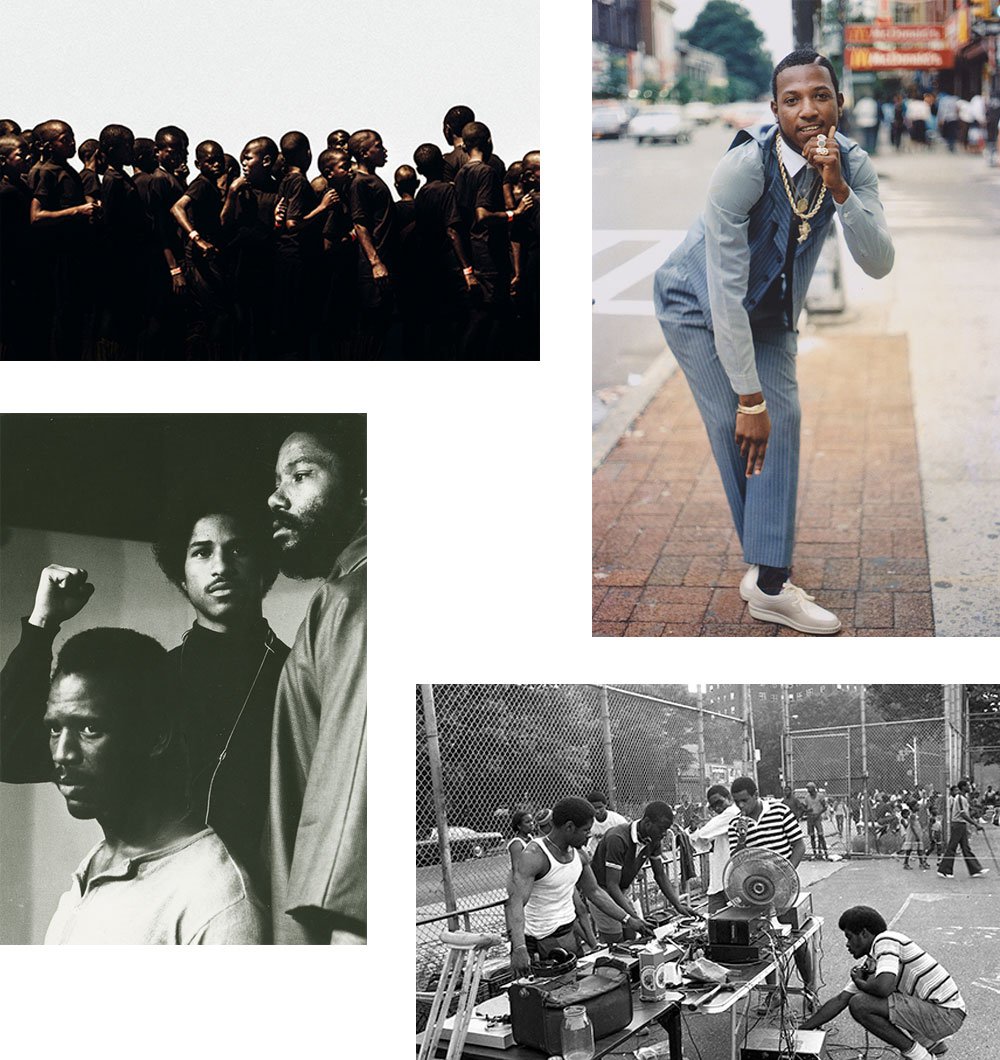Men of Change: Power. Triumph. Truth. is bold contemporary art, photographs, quotes and literary excerpts, and essential stories.
Men of Change is about revolutionary men.
Men of Change weaves history into the moment: learn about the impact of these men and their roots in rich community traditions.
Men of Change represents by naming others—men and women—who signify the powerful African American journey. This innovative exhibition invites visitors to weigh what we’re told with what is authentic—in history, politics, art, culture, and activism.
Men of Change: Power. Triumph. Truth.
California African American Museum, Los Angeles, California
March 27 – May 30, 2021
Photographs courtesy Elon Schoenholz.
The narrative of African American existence has been edited by an oppressive pen. Yet, the men you’ll encounter within this exhibit have consistently asserted their own storyline, one that ignores lies and protects the truth by illuminating the strength, genius, and elegance of black life. From Frederick Douglass to Dr. King, and from James Baldwin to James Brown, the power of African American storytelling offers an array of narratives that contain the unwavering truth of black identity.

Throughout American history, the story of African Americans has often been mis-told, untold, or reformulated into untruth. This has created a longstanding and tragic mythology. Yet these MEN OF CHANGE prove that the lies used to attack black America can be stifled and destroyed by the confident, unapologetic assertion of truth. Oppressive myths have been drowned out by the roar of their truth. And their past, present, and future have been defined by a voice that is their own.

His devotion unlocks minds, allowing his children to use his experience and wisdom as a portal to life and as a guide while they journey through it. This crucial direction is provided by fathers, uncles, teachers, and coaches. It’s offered up in vast amounts by elders on the corner and by men who have witnessed much and faced even more. It comes from a place of deep love and soaring ambition. The ability to open doors and minds is a striking characteristic of these MEN OF CHANGE, and it has given those they’ve mentored the protection, inspiration, and knowledge necessary to explore new worlds.

The streets, blocks, schools, churches, mosques, and neighborhoods that shaped these MEN OF CHANGE helped write their life stories. Their ancestors formed communities to survive, and, centuries later, this collective strength is one of the many reasons these men found a way to thrive. By building community and brotherhood, they continue a tradition that is a hallmark of black culture. And because it is crucial to honor the impact of these neighborhoods and support networks, it’s important to remember that these men maintained an unbroken connection to the places that formed them and the people who raised them. This makes their success a shared experience. For a true MAN OF CHANGE represents more than himself—he represents us all.

For centuries, African men in America have unleashed their imaginations in order to invent reflections of their souls. From art and style to performance and technology, these men have repeatedly set in motion tidal waves of change that have washed up on shores all over the world. Their inventions contain the shared identity of African Americans, resulting in prolific manifestations in their communities. The thoughts, ideas, dreams, and creative pursuits of black men have crafted a crucial amount of American culture.

MEN OF CHANGE signify originators; they are men who do not wait for permission before challenging the injustice and barriers they face. Sometimes they choose to become catalysts; sometimes tragedy chooses them. So whether we follow their lead or honor their memory, we recognize that these men are the prelude to remarkable change. The revolutions we seek so often begins with the changes they create.

Resistance is done out of love.
Perseverance is made possible by love.
Revolution, dedication, survival, success are all products of profound love.
Our MEN OF CHANGE are in love.
They are in love with black people and the black identity in America.
From their well of love they draw power. They use it to shoulder the weight of the present and the ambition of the future. They resist, persevere and revolutionize.
They prove that the great source of their strength is the strength of their love.
“Love is supreme and unconditional; like is nice, but limited.”
-DUKE ELLINGTON, MUSIC IS MY MISTRESS, 1973
